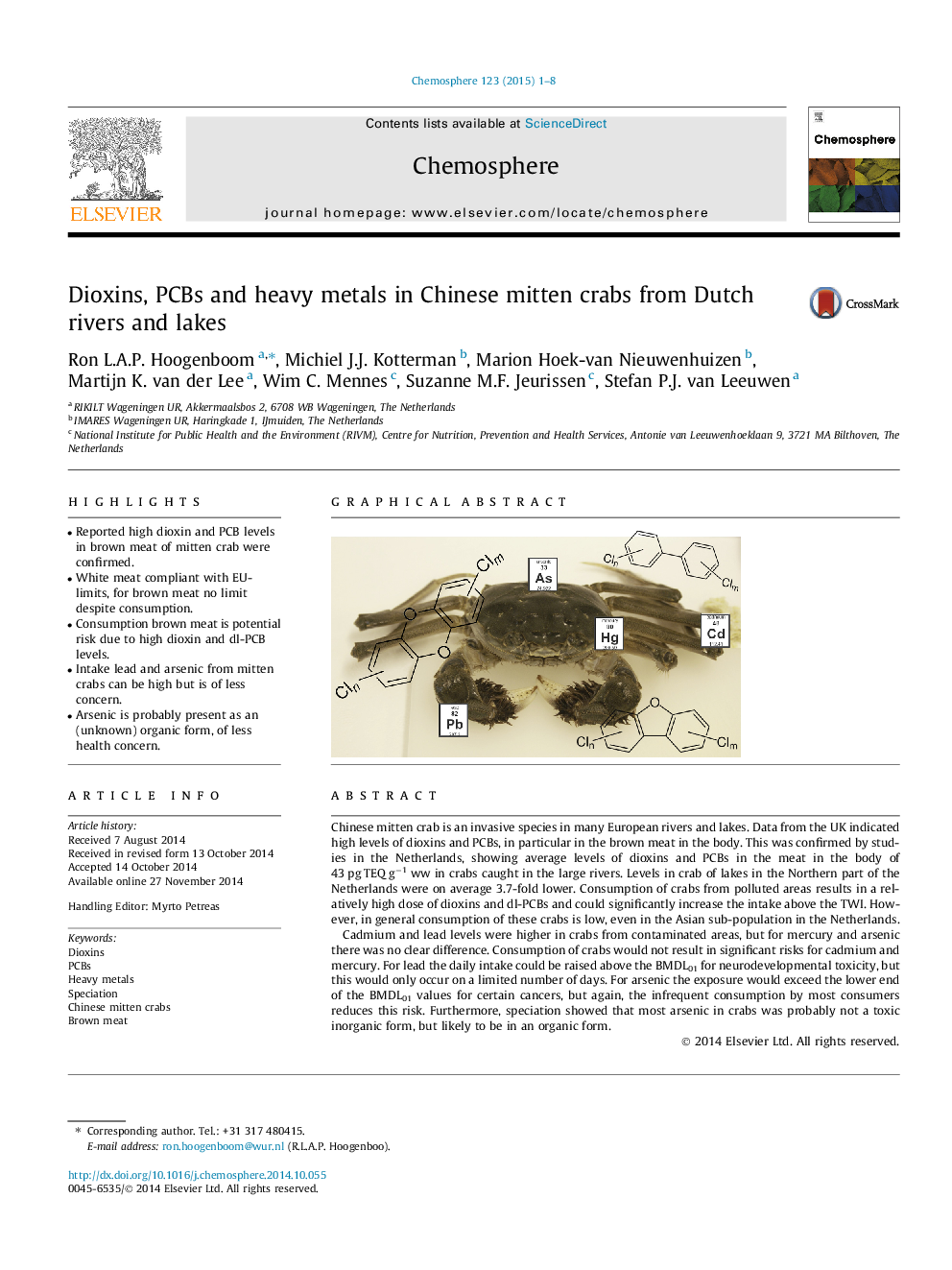| کد مقاله | کد نشریه | سال انتشار | مقاله انگلیسی | نسخه تمام متن |
|---|---|---|---|---|
| 4408575 | 1618848 | 2015 | 8 صفحه PDF | دانلود رایگان |

• Reported high dioxin and PCB levels in brown meat of mitten crab were confirmed.
• White meat compliant with EU-limits, for brown meat no limit despite consumption.
• Consumption brown meat is potential risk due to high dioxin and dl-PCB levels.
• Intake lead and arsenic from mitten crabs can be high but is of less concern.
• Arsenic is probably present as an (unknown) organic form, of less health concern.
Chinese mitten crab is an invasive species in many European rivers and lakes. Data from the UK indicated high levels of dioxins and PCBs, in particular in the brown meat in the body. This was confirmed by studies in the Netherlands, showing average levels of dioxins and PCBs in the meat in the body of 43 pg TEQ g−1 ww in crabs caught in the large rivers. Levels in crab of lakes in the Northern part of the Netherlands were on average 3.7-fold lower. Consumption of crabs from polluted areas results in a relatively high dose of dioxins and dl-PCBs and could significantly increase the intake above the TWI. However, in general consumption of these crabs is low, even in the Asian sub-population in the Netherlands.Cadmium and lead levels were higher in crabs from contaminated areas, but for mercury and arsenic there was no clear difference. Consumption of crabs would not result in significant risks for cadmium and mercury. For lead the daily intake could be raised above the BMDL01 for neurodevelopmental toxicity, but this would only occur on a limited number of days. For arsenic the exposure would exceed the lower end of the BMDL01 values for certain cancers, but again, the infrequent consumption by most consumers reduces this risk. Furthermore, speciation showed that most arsenic in crabs was probably not a toxic inorganic form, but likely to be in an organic form.
Figure optionsDownload as PowerPoint slide
Journal: Chemosphere - Volume 123, March 2015, Pages 1–8